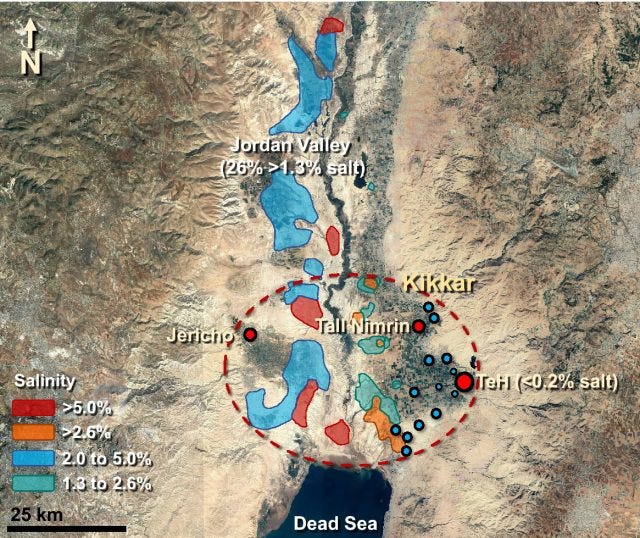# Catastrophic Cosmic Event May Have Annihilated Ancient City
Written on
Chapter 1: The Enigma of the Jordan Valley
The Jordan River Valley has been inhabited for millennia, but there's a puzzling void in the archaeological record from around 3,600 years ago. This gap corresponds with the sudden abandonment of numerous towns and settlements in the region. A team of researchers, after fifteen years of investigation, has put forth compelling evidence for a colossal airburst event over the Jordan plains, not far from the northern edge of the Dead Sea.
This explosion is believed to have been significantly more powerful than the Tunguska event—potentially a thousand times stronger than the atomic bomb dropped on Hiroshima. The findings may clarify the historical anomaly known as the Late Bronze Age Gap and could provide the physical basis for the Biblical narrative of Sodom and Gomorrah.
Tall el-Hamaam, a city that existed for nearly 7,000 years, once thrived in this area. The term "Tall" translates to "hill" in Arabic, signifying a fortified urban center. Tall el-Hamaam surpassed Jerusalem and Jericho in size, featuring a grand palace, a temple, a beltway, and robust city walls. However, around 1650 BCE, this vibrant city was obliterated, leading to a mass exodus that included the nearby city of Jericho, which also faced destruction. Rather than rebuilding, the inhabitants vanished without a trace.
This paragraph will result in an indented block of text, typically used for quoting other text.
Section 1.1: Evidence of Catastrophe
The devastation at Tall el-Hamaam was profound. Structures were decimated, with mud bricks either pulverized or transformed into molten foam. Substantial amounts of molten salts fused with the original paving stones, while titanium and iridium were found mixed into pottery and tiles, which had their surfaces vitrified into a glass-like substance. Such extreme heat—greater than that required to fire clay—indicates an otherworldly intensity.

The aftermath left almost no stone atop another, except for a few remnants in the impact area northeast of the central hill. The debris aligns in a specific southwest-to-northeast direction, suggesting a powerful force. After meticulous analysis, researchers concluded that the destruction was the result of an airburst explosion caused by a celestial object that fragmented just kilometers above the ground. The estimated thermal blast lasted about thirty seconds, generating shock waves that created the unique quartz formations found in the debris.
Section 1.2: The Human Toll
Archaeological evidence suggests a staggering human cost. It is estimated that up to 90% of the victims were obliterated beyond recognition, with remains found alongside melted metal and glass. Some skeletons were discovered in various states of dismemberment, with one individual found in a crouched position, hands shielding